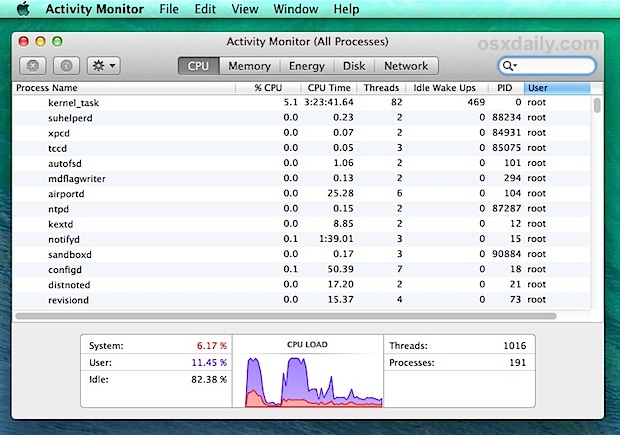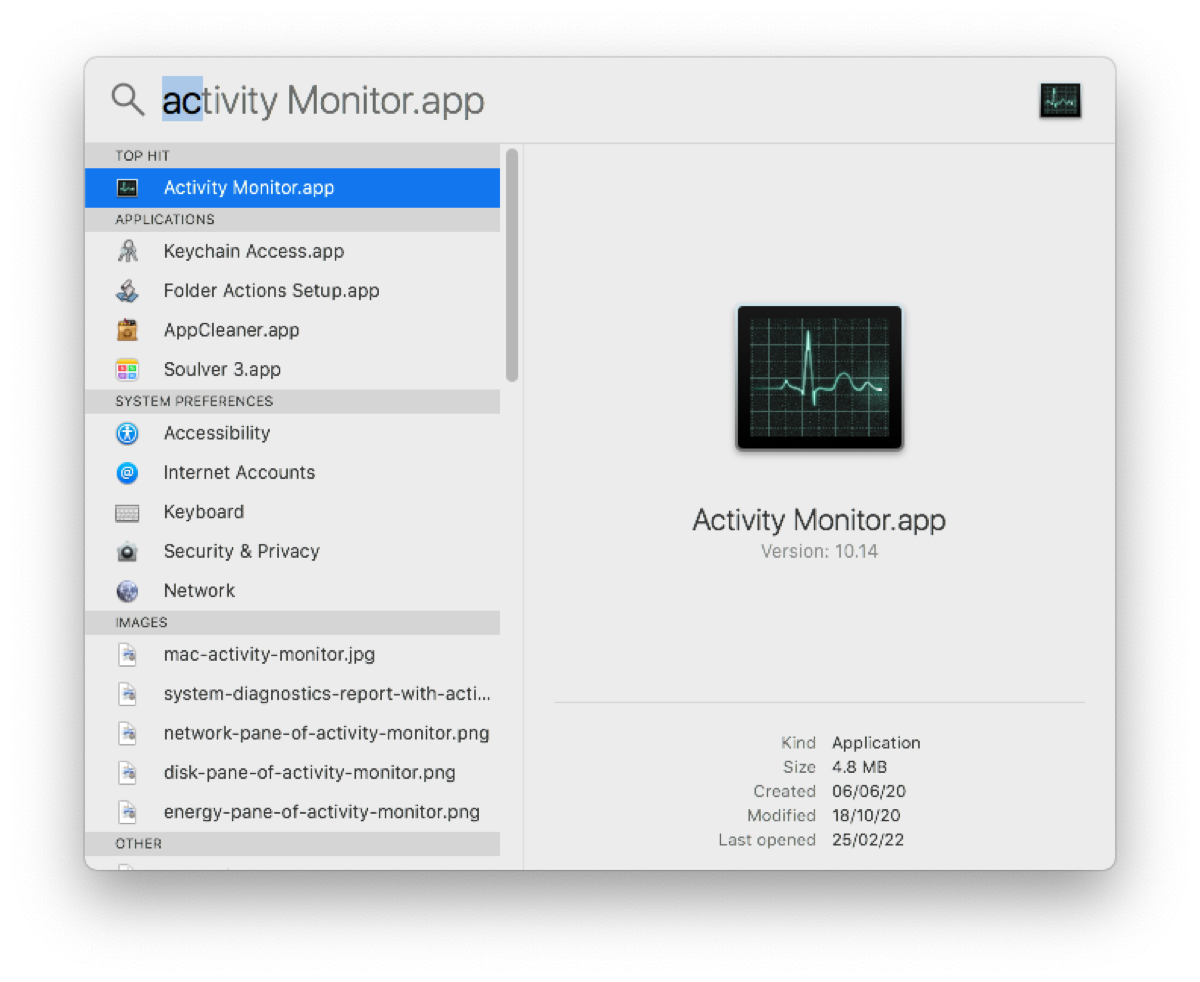
In every case, Activity Monitor’s “Energy Impact” was the same as top‘s POWER measure. I did extensive testing with a range of programs: ones that trigger 100% CPU usage ones that trigger controllable numbers of idle wakeups ones that stress the memory system heavily ones that perform frequent disk operations and ones that perform frequent network operations.
#Activity monitor mac os mac os x
Back to Activity Monitor and “Energy Impact” MacBook Pro running Mac OS X 10.9.5įirst, I did some measurements with a MacBook Pro with an i7-4960HQ processor running Mac OS X 10.9.5. In fact, POWER is a unitless measure because it is a semi-arbitrary combination of two measures with incompatible units. a program with zero CPU usage and 3,000 wakeups per second will have a POWER score of 150 - so it is not a percentage. The value of this function can easily exceed 100 - e.g. It’s basically the same as %CPU but with a “tax” of 500 microseconds for each wakeup and an exception for kernel processes. The POWER computation is a function of CPU and IDLEW. |used_us| is the time this process was running during the sample period |elapsed_us| is the length of the sample period
#Activity monitor mac os code
The following is a summary of what the code does, and it’s easier to understand if the %CPU and POWER computations are shown side-by-side. (The POWER measure was added to top in OS X 10.9.0 and the code has remain unchanged all the way through to OS X 10.10.2, which is the most recent version for which the code is available.) What about the POWER column? top is open source, so its meaning can be determined conclusively by reading the powerscore_insert_cell function in the source code. Common causes of wakeups include scheduled timers going off and blocked I/O system calls receiving data. This happens when the OS schedules a process to run due to some kind of event. These occur when the processor package (containing the cores, GPU, caches, etc.) transitions from a low-power idle state to the active state. The IDLEW column is the number of package idle exit wakeups. The PID, COMMAND and %CPU columns are self-explanatory. It will show real-time data, updated once per second, like the following. (A non-default invocation is necessary because the wakeups and power columns aren’t shown by default unless you have an extremely wide screen.) top -stats pid,command,cpu,idlew,power -o power -d To see all these together, invoke it as follows. Like Activity Monitor, top performs periodic measurements of many different things, including several that are relevant to power consumption: CPU usage, wakeups, and a “power” measure. top is a program that is similar to Activity Monitor, but it runs from the command-line. This sounds plausible, and we will soon see that it appears to be close to the truth. To get the units they look at CPU usage, interrupts, and wakeups… track those using counters and apply that to the energy column as a relative measure of an app. I don’t believe you can directly relate them to one simple unit, because they are from an arbitrary formula of multiple factors. If my recollection of the developer presentation slide on App Nap is correct, they are an abstract unit Apple created to represent several factors related to energy usage meant to compare programs relatively. The most precise description I have found says the following. Enough so that various other people have wondered what it means. The higher the number, the more impact an app has on battery power. The Energy tab of Activity Monitor displays the Energy Impact of each open app based on a number of factors including CPU usage, network traffic, disk activity and more. Other Apple documentation says the following. Lower numbers are better.Īvg Energy Impact: The average energy impact for the past 8 hours or since the Mac started up, whichever is shorter. The Activity Monitor documentation says the following.Įnergy Impact: A relative measure of the current energy consumption of the app. There are no units given for “Energy Impact” or “Avg Energy Impact”. The following screenshot shows the Activity Monitor’s “Energy” tab.


In this blog post I use a combination of code inspection, measurements, and educated guesses to hypothesize how it is computed in Mac OS X 10.9 and 10.10. However, despite its prominence, the exact meaning of the “Energy Impact” measure is unclear. Apple support documentation specifically recommends it for troubleshooting battery life problems, as do countless articles on the web. It is well-known and its “Energy Impact” measure (which was added in Mac OS X 10.9) is often consulted by users to compare the power consumption of different programs. Activity Monitor is a tool in Mac OS X that shows a variety of real-time process measurements.


 0 kommentar(er)
0 kommentar(er)
